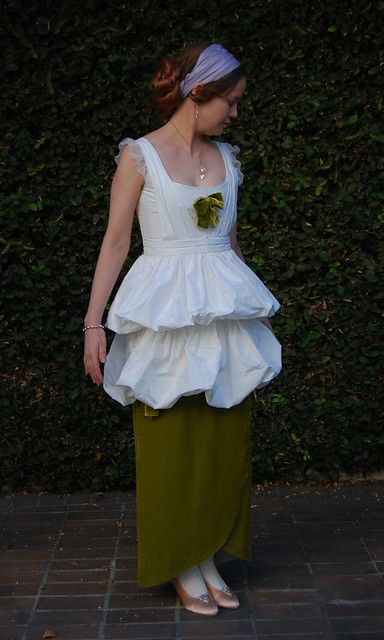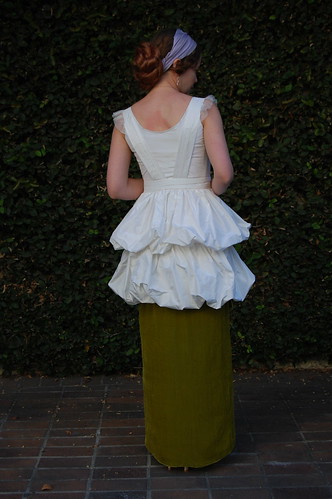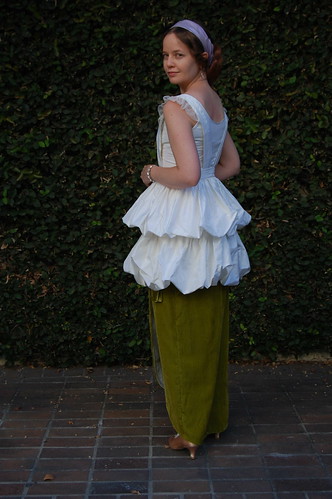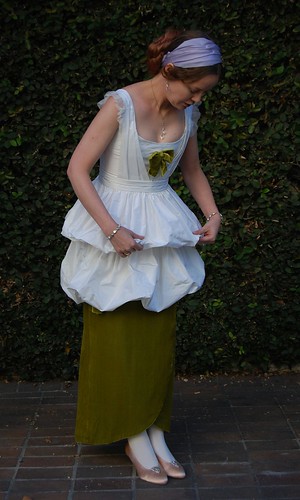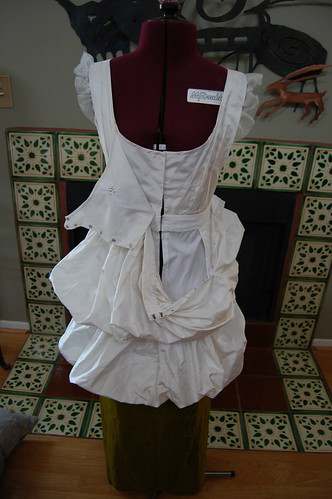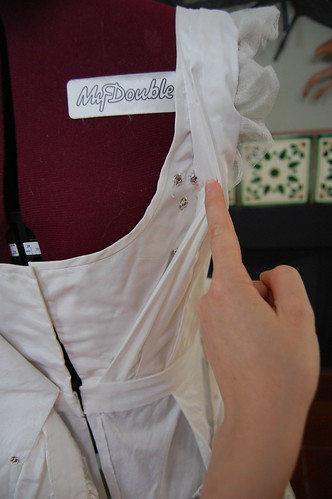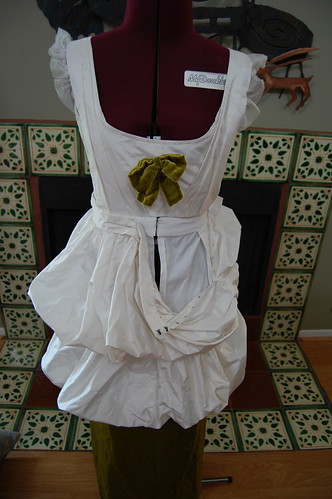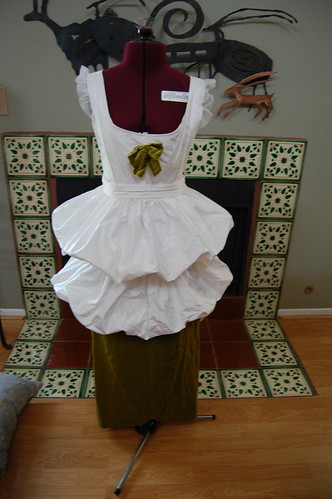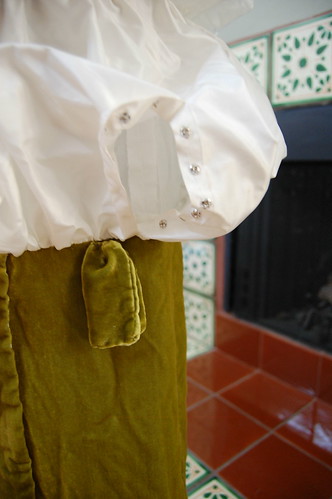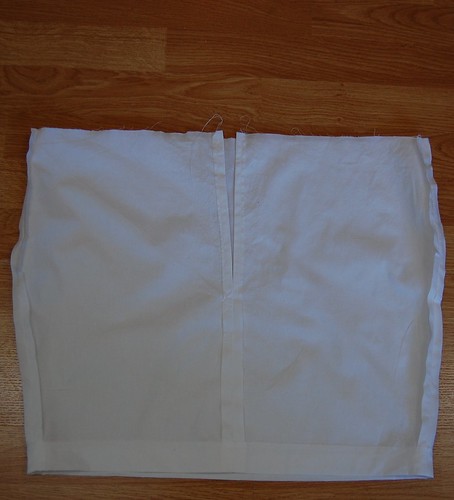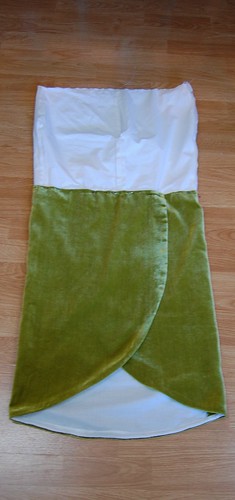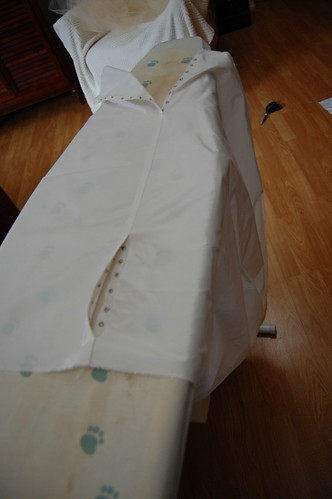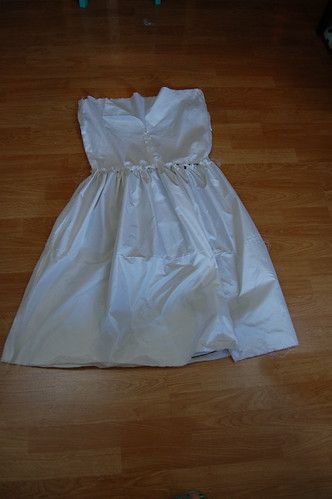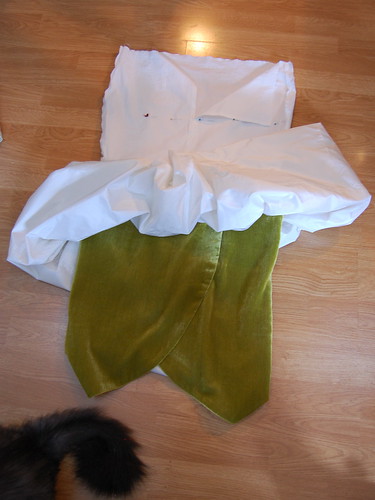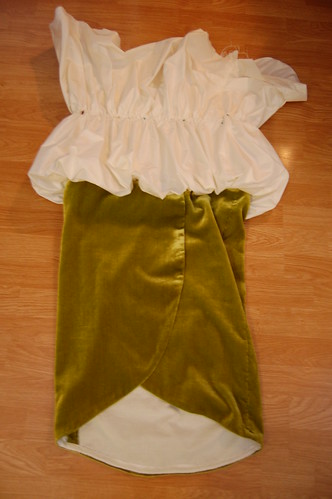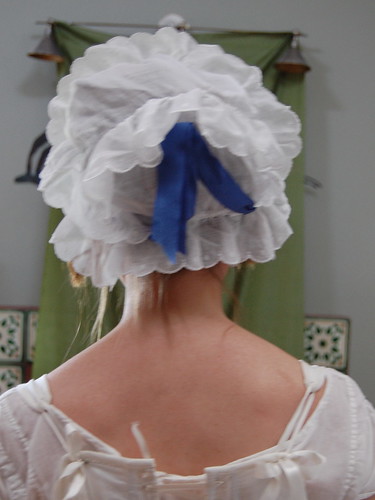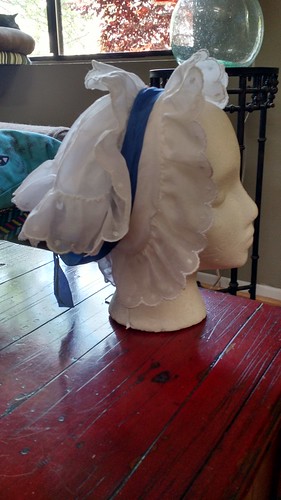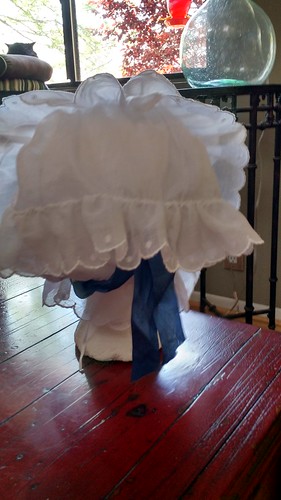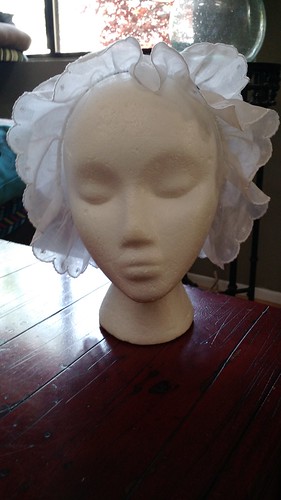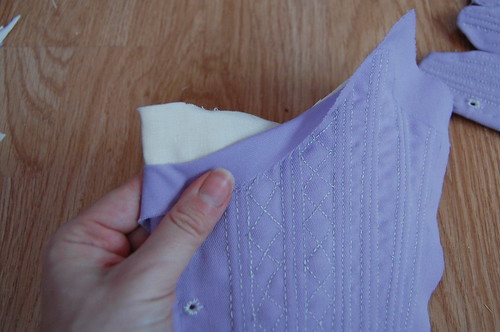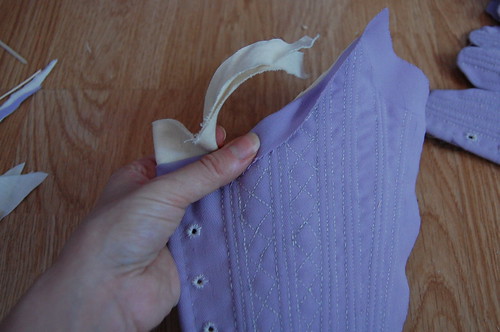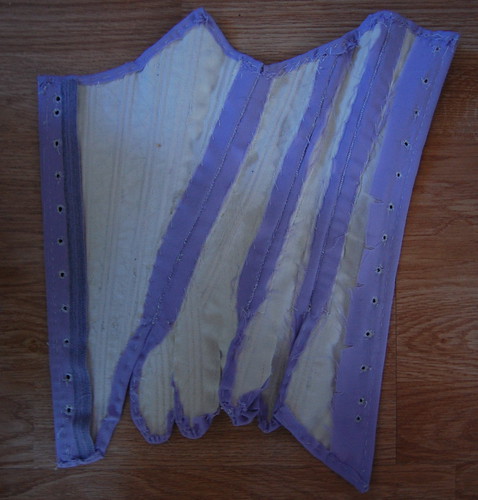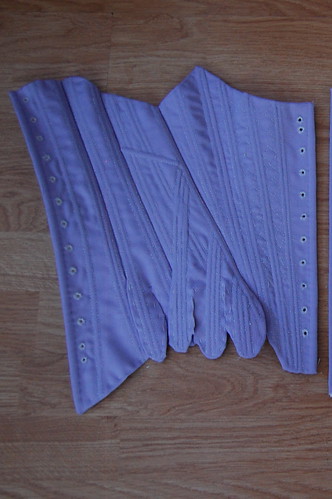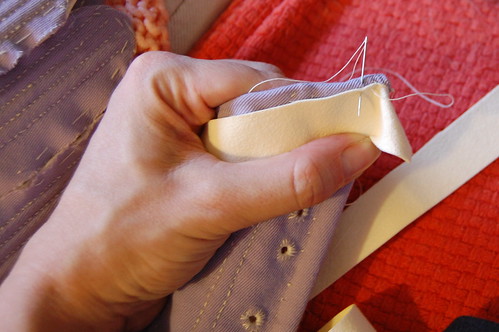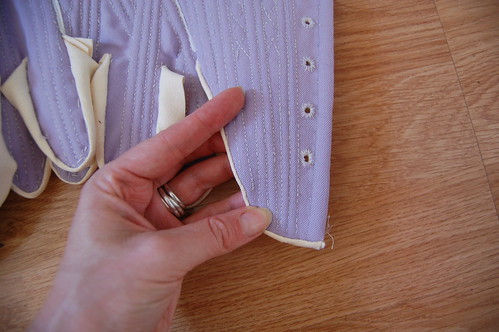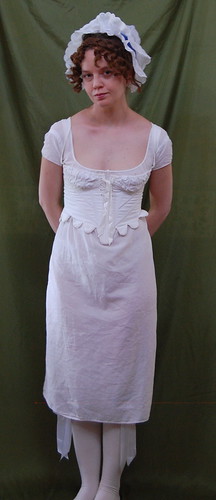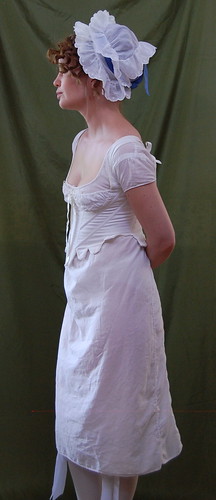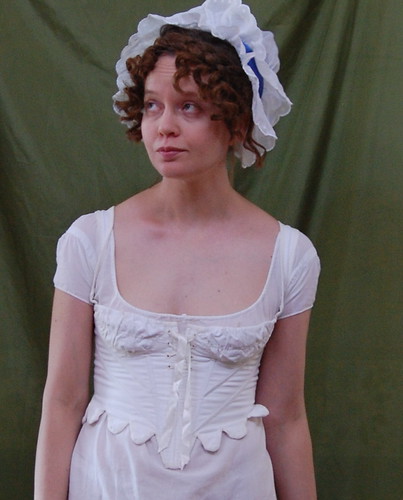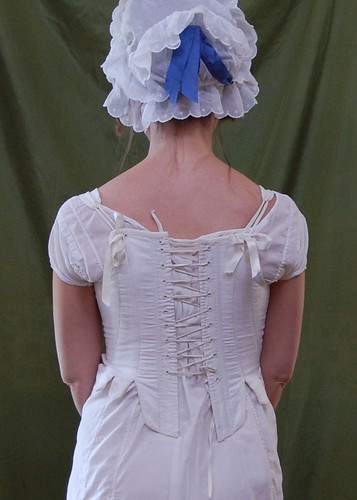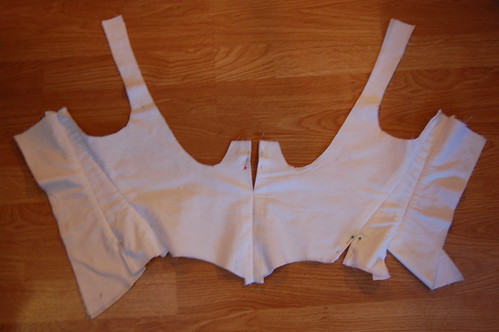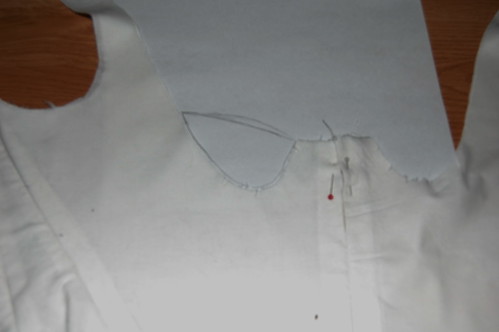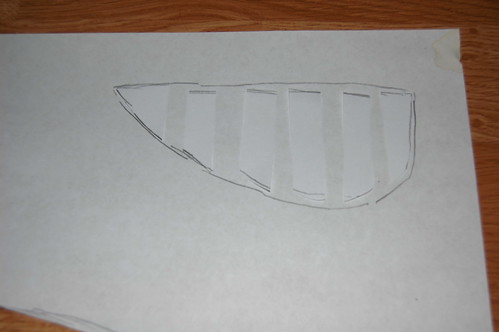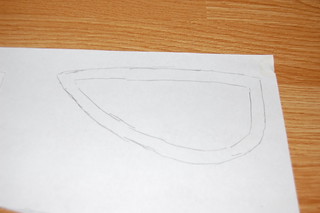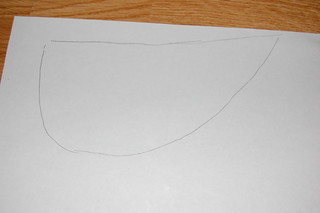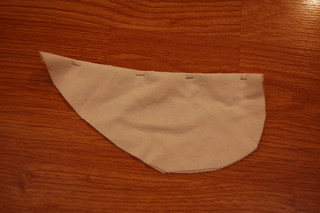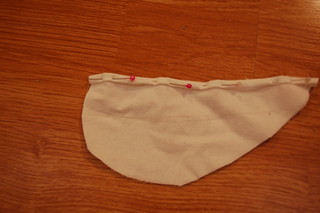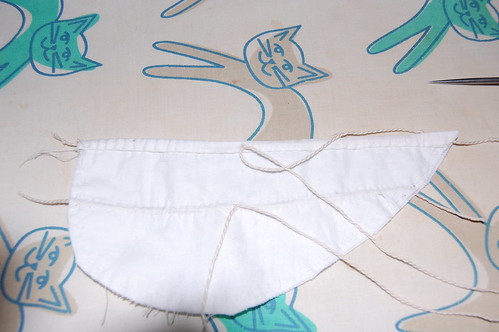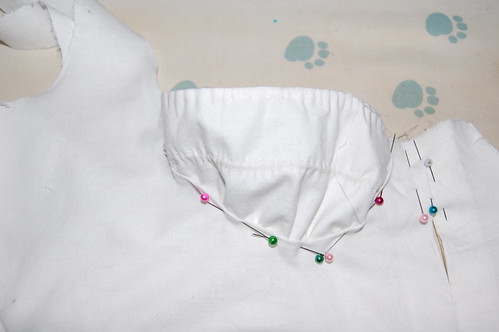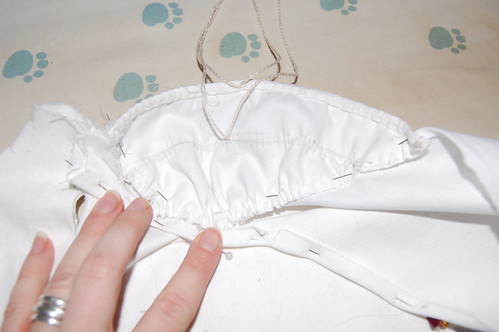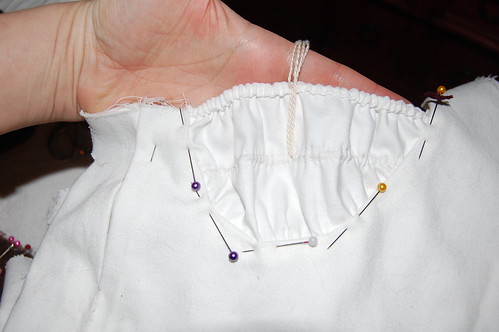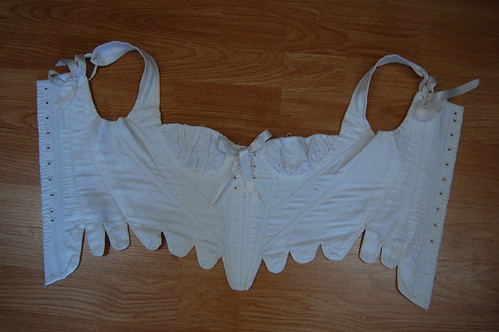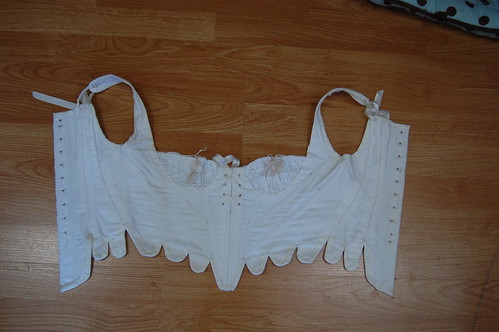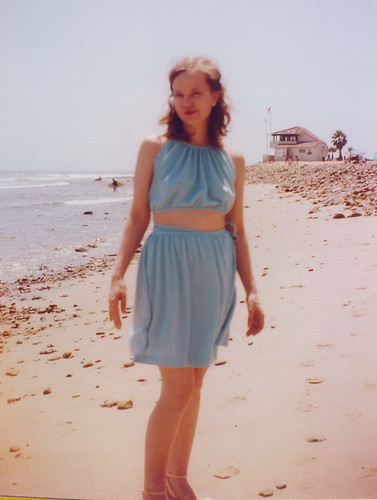
My 1946 playsuit in a picture taken by my 1919-1924 Brownie No. 2 Model E. It's based on this 1946 suit by Claire McCardell at the Met. It's made of wool jersey from Nature's Fabrics.
I made this in 2013 with plans to wear it to the hopeful pool party on Sunday at Costume College, but that didn't happen. I brought it in 2014 to wear to the beach, but that also didn't happen. I was quite happy to wear it to both the beach and Thursday night pool party at Costume College this year!
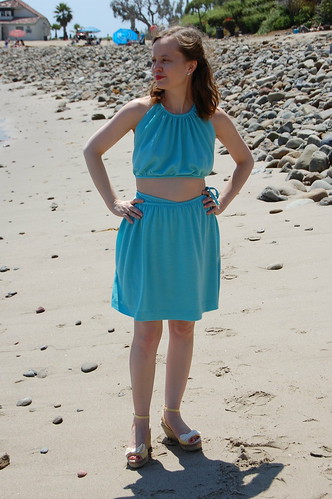
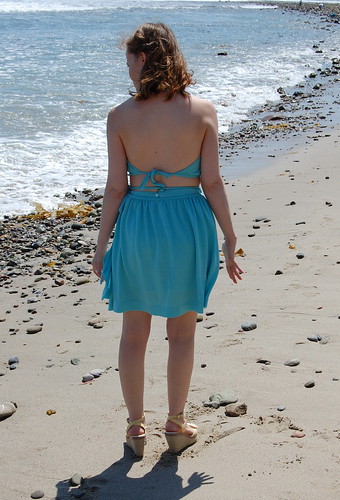
Construction was very straightforward. The top is a trapezoid with a slightly scooped neck that's gathered to self fabric ties. To pattern the top, I took a rectangle of muslin, folded the edges in a trapezoidal shape, gathered it to my neck and underbust, adjusted the width, and marked the curve of my neck. The skirt is a wrap skirt, and just a rectangle of fabric gathered to self ties. The underlap area isn't gathered so the skirt sits better.
To attach the ties, I sewed them right side to right side using my machine's stretch stitch. I sewed the back by hand. I also sewed the ties shut by hand. I'm sure there's an efficient way to do this by machine, but I'm a good enough hand sewer that I found it easy to do this way.
I decided to make the top tie instead of button as in the original to make it easier to fit, and to, although I wasn't planning on wearing this for actual swimming, not have to worry about stretching if it got wet.
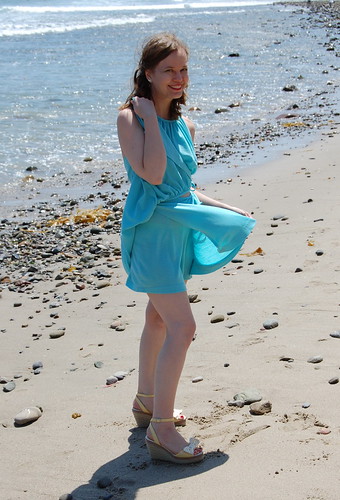
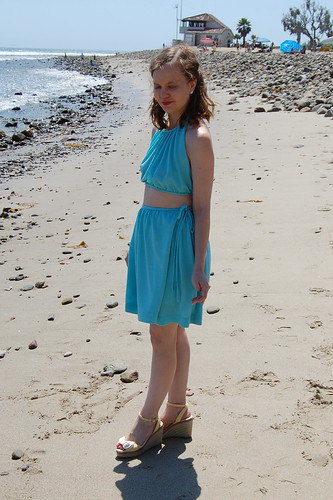
I made the shorts a year after making the skirt and top--fortunately Nature's Fabrics still had the seafoam green! Instead of making the slightly diaper like shorts of the original, I used the pattern for shorts from the vintage pattern I used for my first playsuit. The shorts close in back with a button and loop at the waist and snaps on the placket.
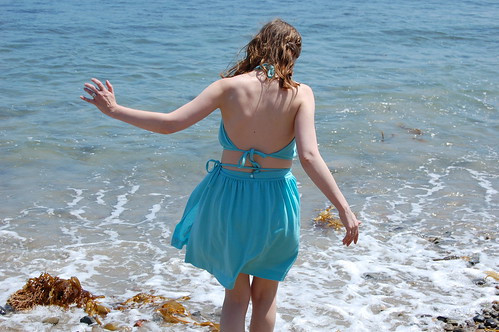
And though I didn't go very deep, I did wade into the ocean in this! A few waves tried to drench the skirt, but, being wool jersey, it repelled most of the water and dried quickly.

